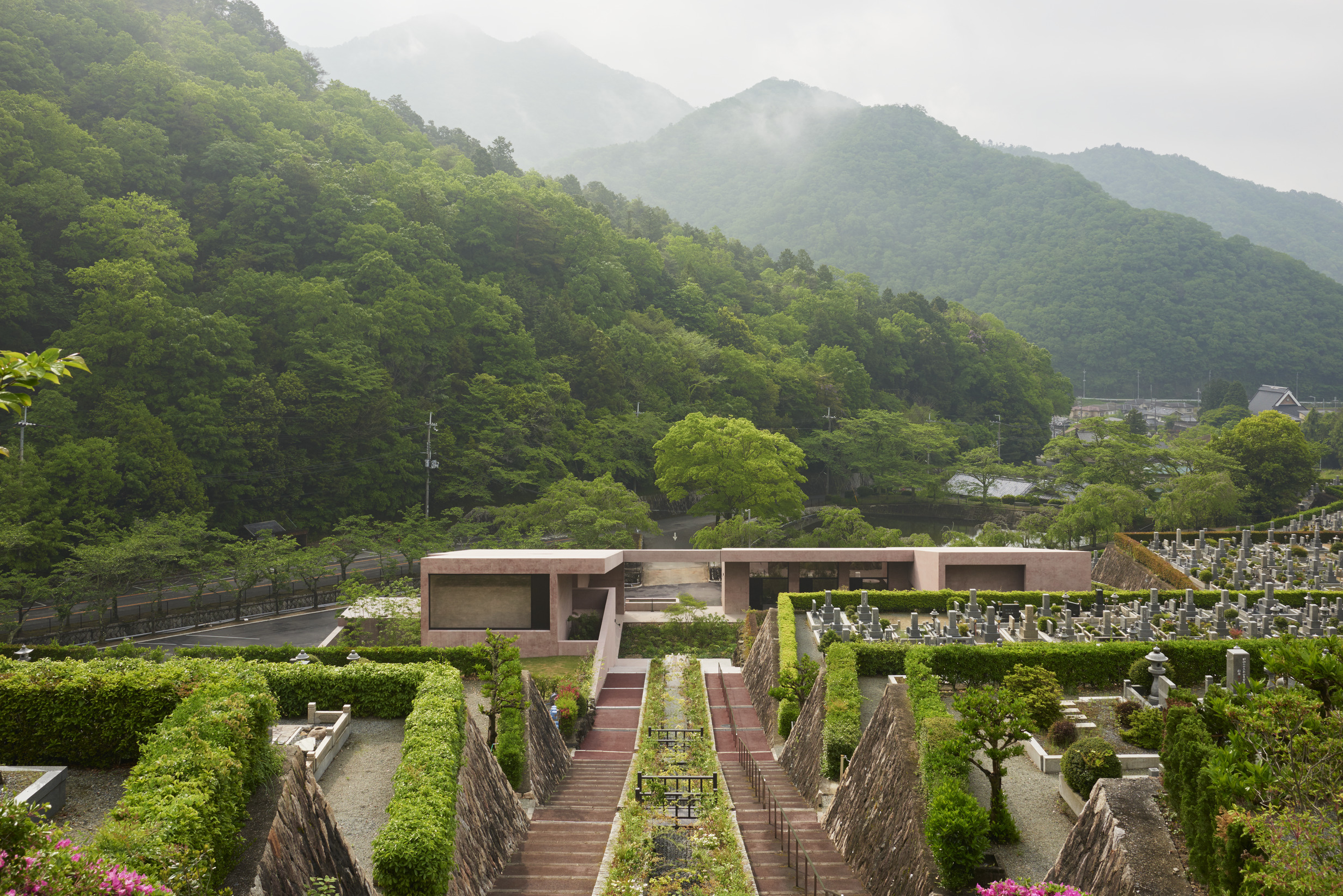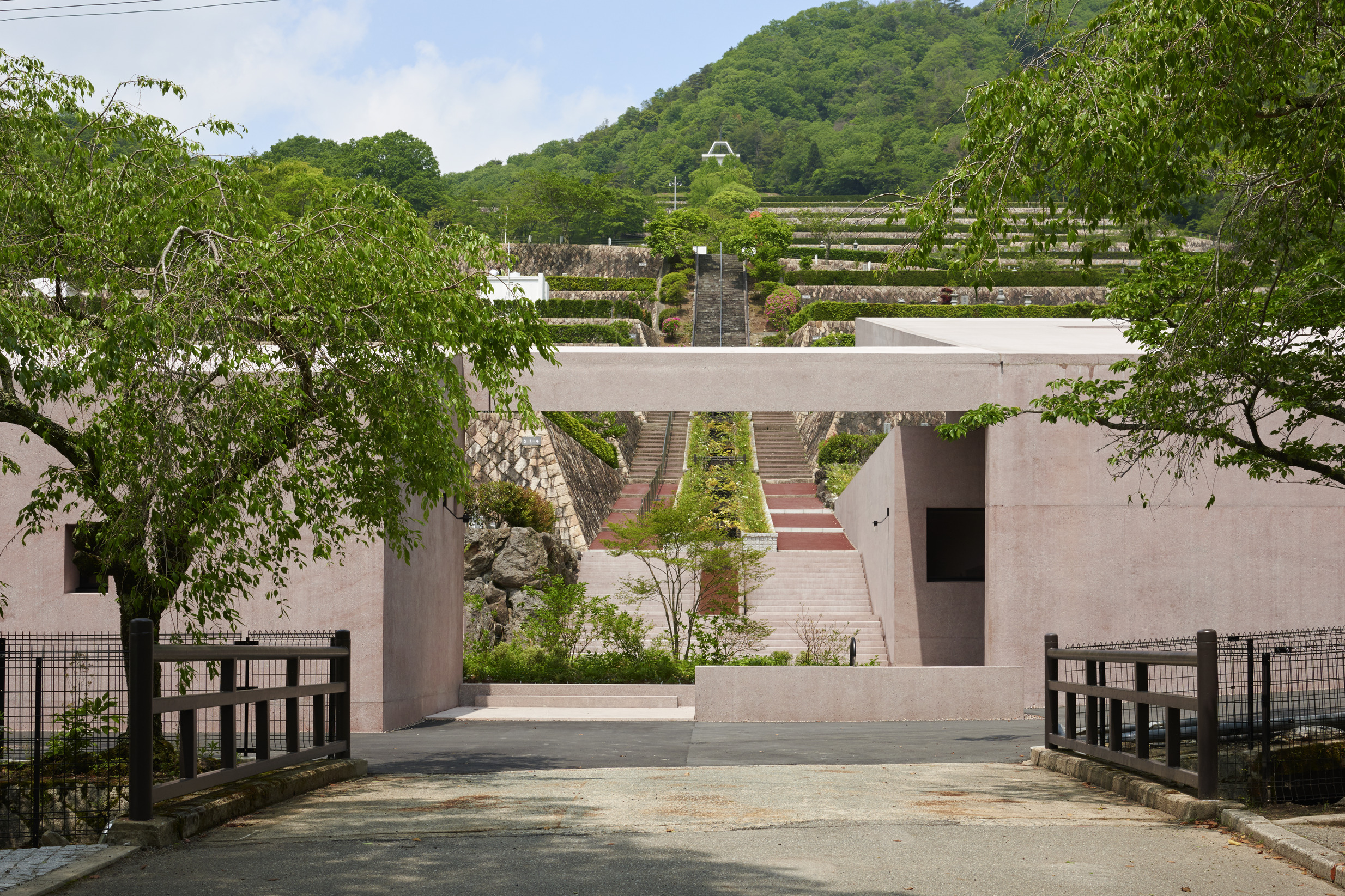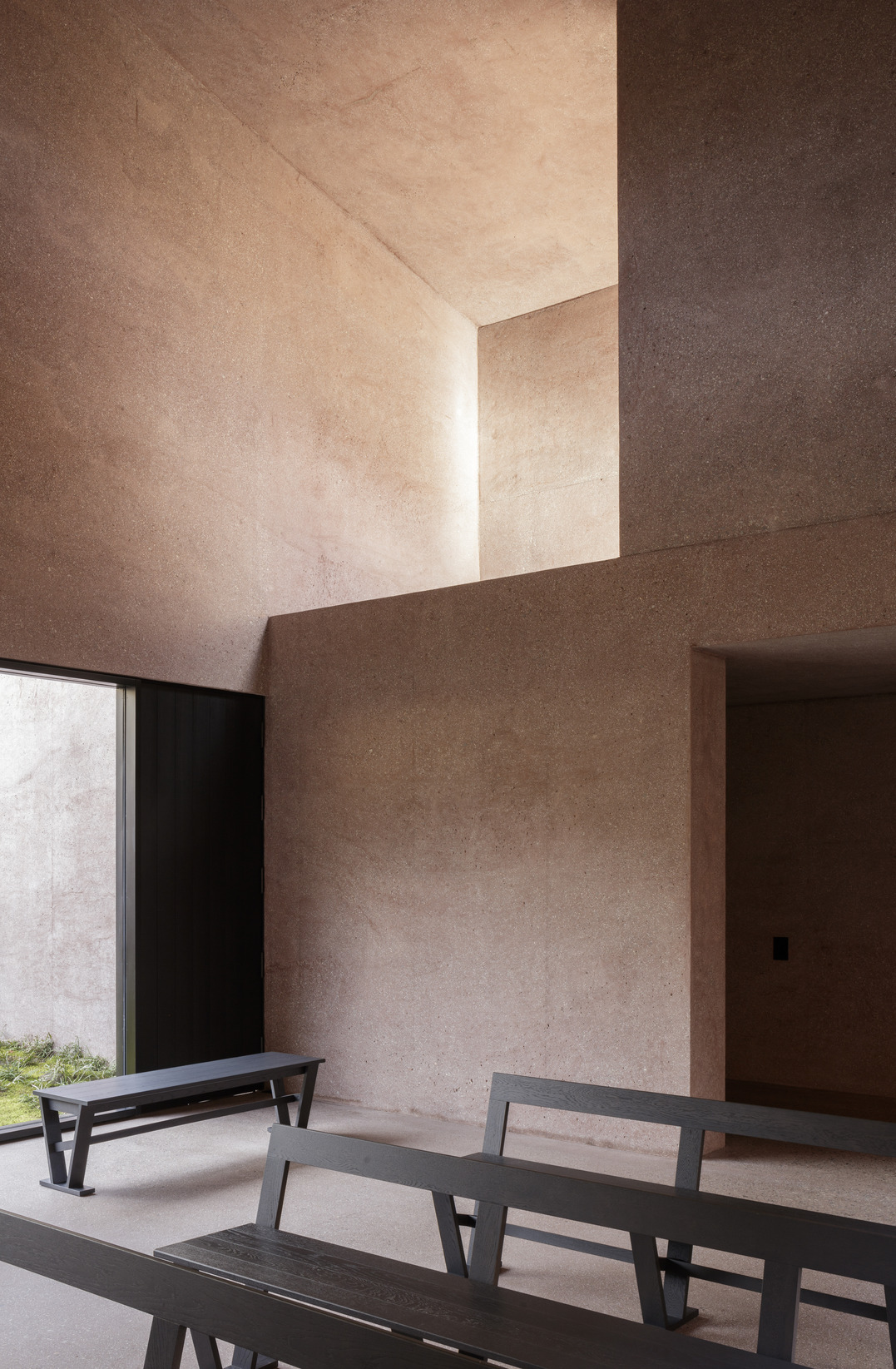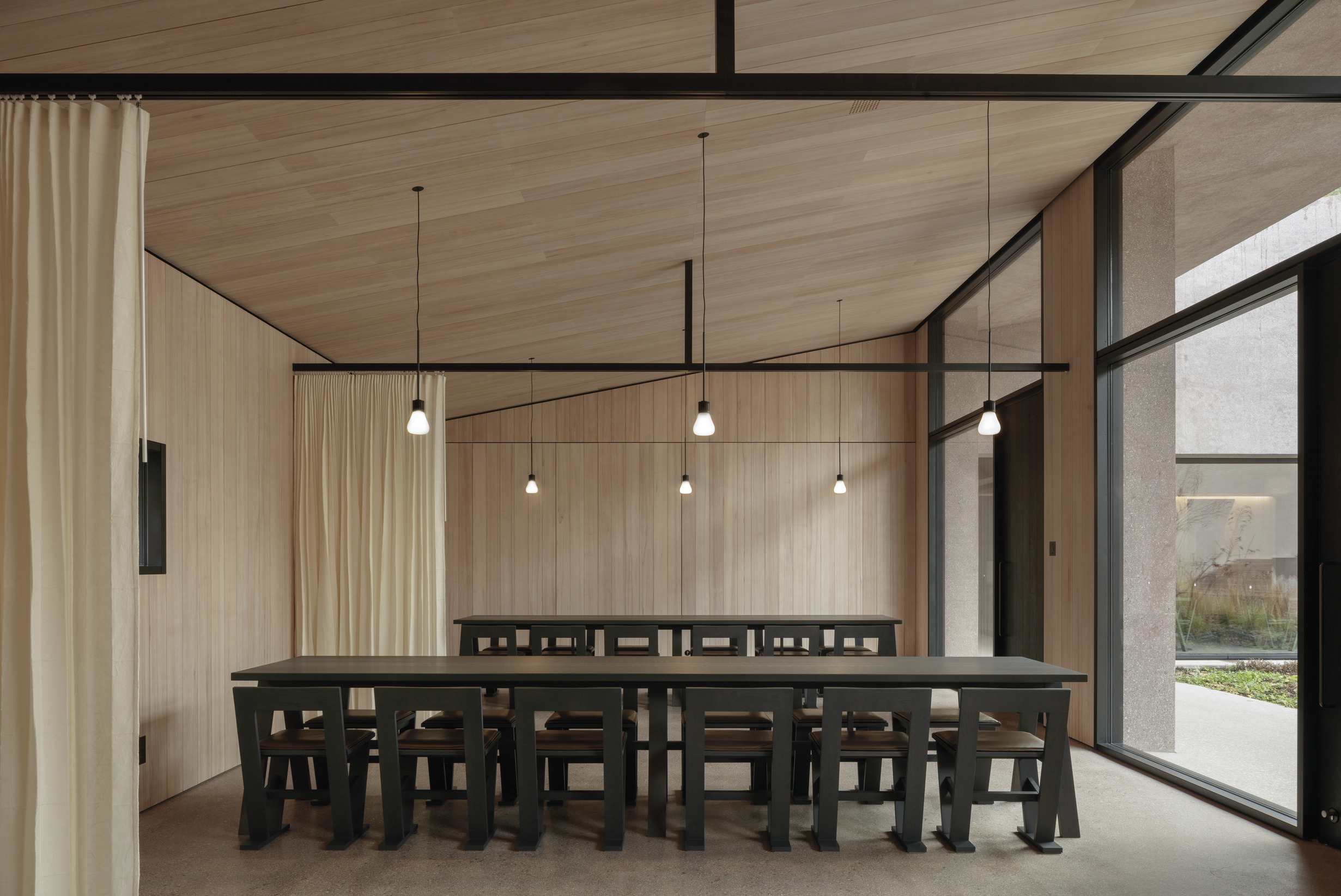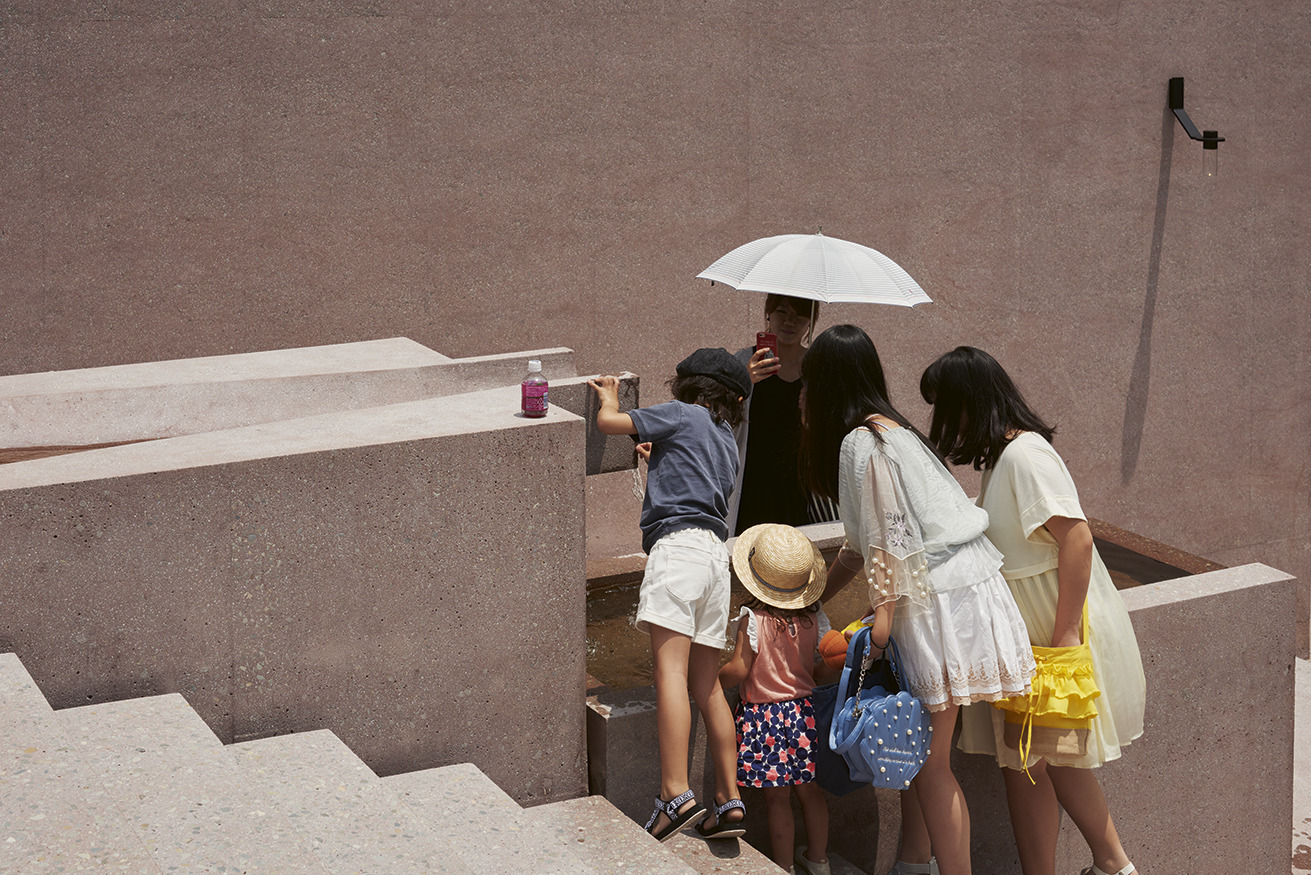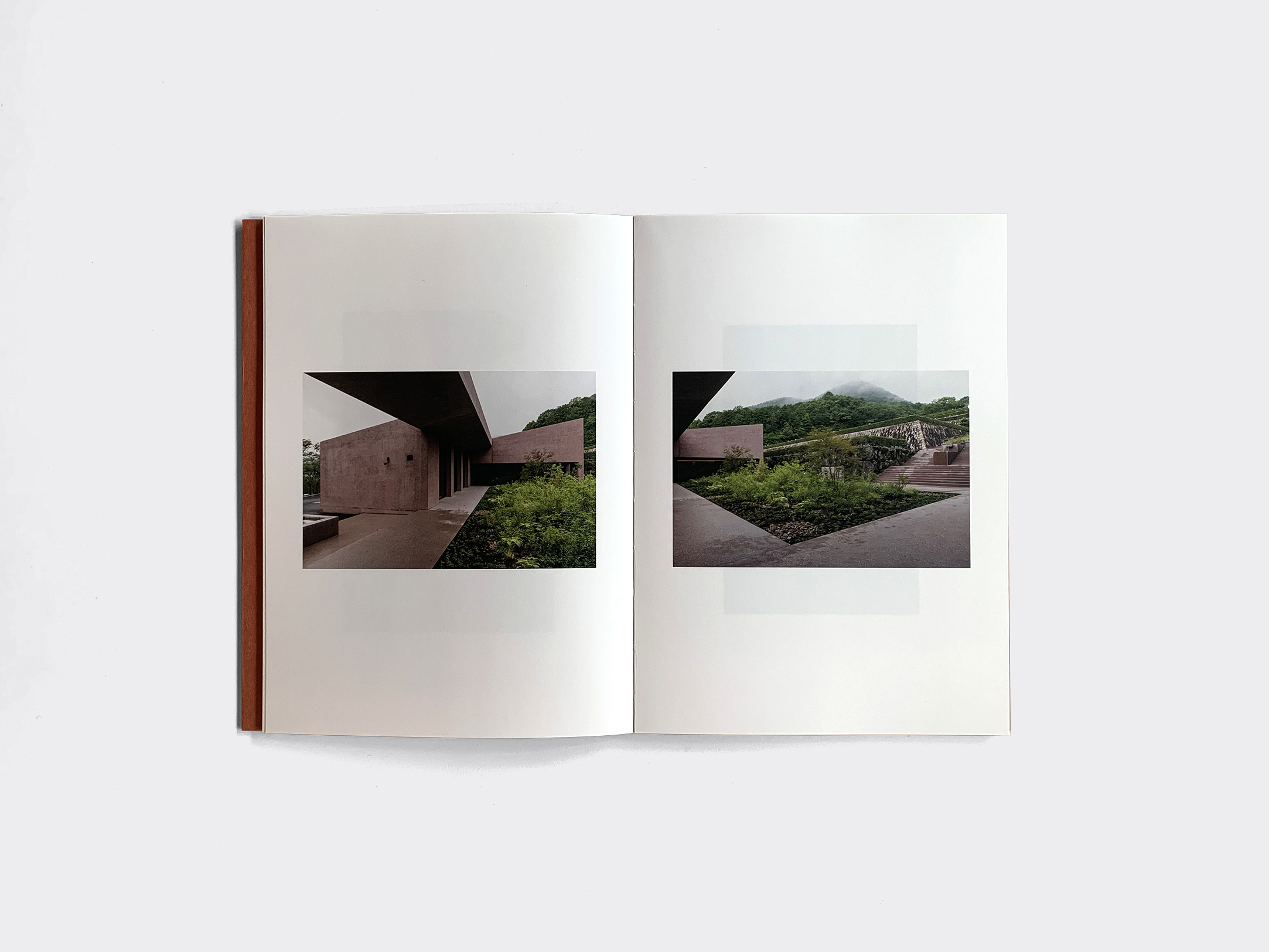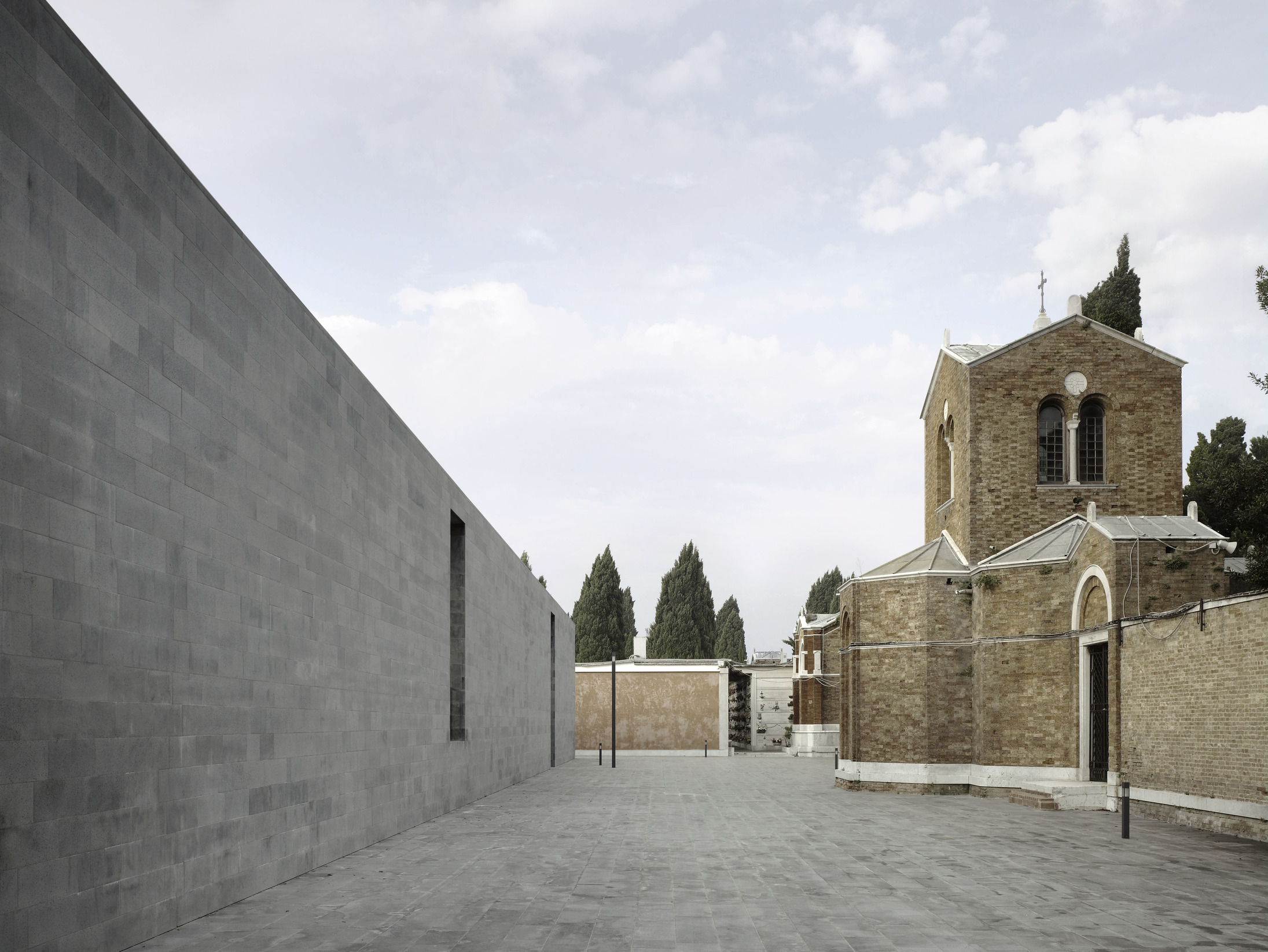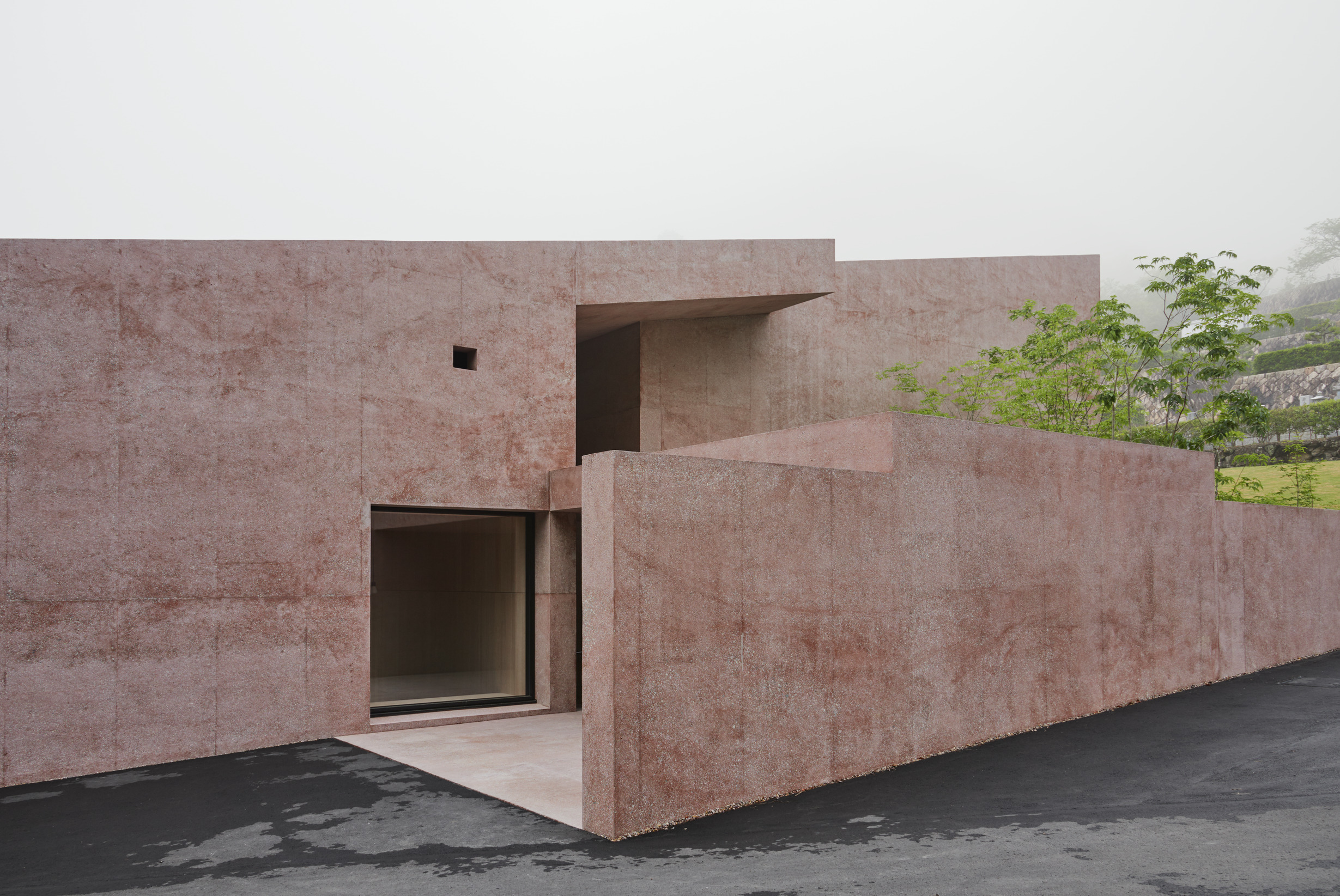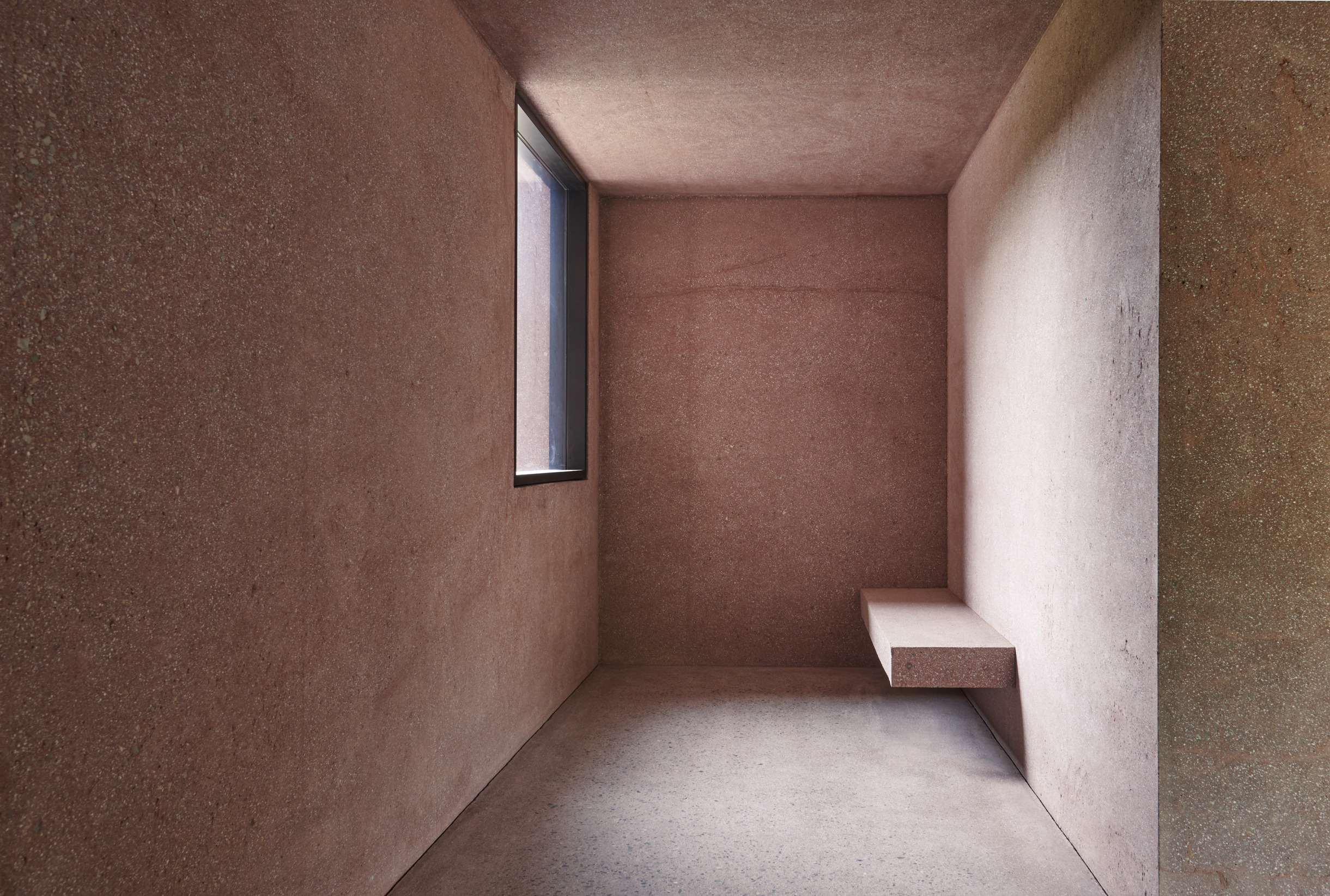Inagawa cemetery chapel and visitor centre
Hyogo, Japan
2013–17
Inagawa Cemetery is located on a sloping site in the densely wooded mountains of Hyogo prefecture, approximately 40 kilometres north of Osaka. The cemetery is laid out across terraces and bisected by a monumental flight of steps leading up to a shrine at the highest point – an axis that orients the whole project. Aligned with this central staircase, and as a counterpoint to the shrine, the visitor centre and chapel spaces are gathered around a garden courtyard. Visitors approach from the rear, entering the garden via a wide, framed central opening in the south-east façade that acts as a threshold between the outer world and a quieter space within for contemplation.
The programme is formally arranged under a single, sloping roof plane, following the sight line from the entrance up to the shrine. The rooms of the visitor centre open onto the courtyard garden while the secluded chapel remains separate. It can be reached via a discrete corridor, directly accessed from the outside or up a gentle ramp from the garden. An unadorned and quiet room with minimal heating and artificial lighting offers a non-denominational contemplative space, pure in its form. Relying on indirect sunlight, partially from the walled gardens on either side, visitors’ focus is drawn to the essential rhythms of time through the natural indicators of daylight fluctuation and seasonal foliage changes.
Diagonally across the garden from the chapel is the visitor centre which consists of two large rooms for family gatherings and commemorations. The visitor lounge offers an informal area for resting and eating while the memorial room, which can be separated into three smaller rooms by pleated curtains made with washi paper on fabric, offers space for formal meals after rituals.
The floors, walls and roof are formed as pure building elements and poured from the same earth-like red coloured concrete – honed for internal floors, and ground and sandblasted for the walls and soffits – giving the overall structure a monolithic appearance in the landscape. The interiors of the visitor centre are timber lined. A range of furniture designed specifically for the project consists of simple, informal painted wooden chairs, benches and tables that can be arranged depending on the occasion.
Inspired by Japanese meadows and woodlands, the gardens feature a selection of grasses, shrubs and wildflowers which are carefully juxtaposed. Following the axial link between the two ends of the site, a rill carries water down the middle of the staircase from the top of the mountain directly towards the building. As it approaches the garden, the running water slows and pools as it collects in a trough, then is diverted through a new underground channel under the site to a nearby canal.
Data and credits
- Project start
- 2013
- Construction start
- 2016
- Completion
- 2017
- Gross floor area
- 500m²
- Client
- Boenfukyukai Foundation
- Architect
- David Chipperfield Architects London
- Directors
- David Chipperfield
- Project architects
- Matt Ball (design lead), Tom Herre (detail design, construction)
- Project team
- Mira Abad, Ricardo Alvarez, Clemens Gerritzen, Amandine Kastler, Rik Nys, Patrick Ueberbacher, Richard Youel
- Executive architect
- Key Operation Inc. / Architects
- Landscape architect
- Marcia Iwatate + Kamimura Landscape Architects
- Project management
- Naoko Kawamura
- General contractor
- Obayashi Corporation
- Structural engineer
- Jun Sato Structural Engineering
- MEP engineer
- ES Associates
- Lighting design
- Viabizzuno Srl
- Furniture
- Cassina IXC Ltd.
- Textiles
- NUNO Corporation
- Signage and wayfinding
- Hayashi Takuma Design Office
- Photography
- Keiko Sasaoka, Yuna-Yagi, Edmund Sumner
- Links
- boenf.org
